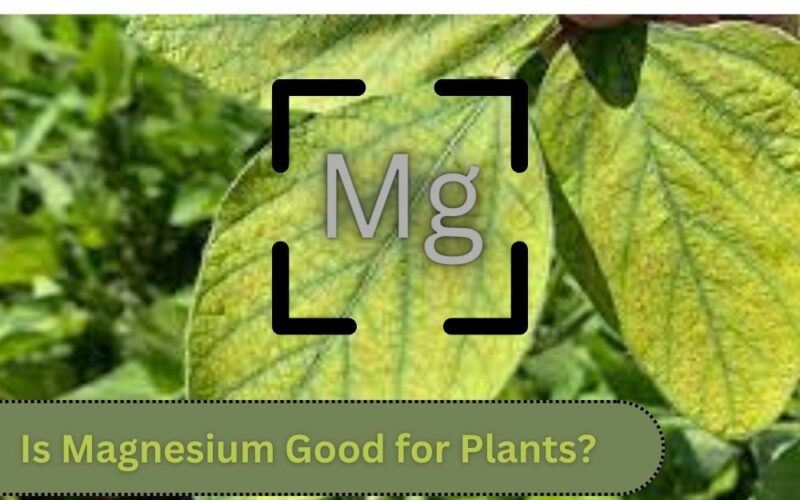Here, I will tell you about the role of Magnesium in plants to answer the question: “Is Magnesium good for plants?“. you also will find out about the Mg deficiency symptoms and will find the best source of Magnesium for plants. keep reading.
Plants need various nutrients for their healthy growth that take them from soil (and sometimes air). The soil nutrients are grouped into two basic categories based on the plant’s needs:
- Macronutrients: Plants need them in large amounts and include C, H, O, N, P, K, Ca, Mg, and S (in another classification, Ca, Mg, and S come in a separate group that is called Mesonutrients. Mesonutrients are needed in a moderate amount between Macro and Micronutrients)
- Micronutrients: plants require them in trace amounts and include B, Cu, Fe, Mn, Zn, Mo, Cl, Co, and Ni.
Please note that both macro and micronutrients are essential for plants and their classification is only based on their necessary quantities for healthy growth. For example, Fe is one of the critical nutrients that play important roles, although plants require it in a trace amount.
Is magnesium good for plants? Yes, as you found out above, Magnesium is one of the Macronutrients, which means that your plant must take a significant amount of it from the soil.
But why does your plant need large amounts of Mg? Is there a sufficient amount of Mg in the soil? What are the symptoms of Magnesium deficiency in plants? keep reading.
➡ You can also hear the audio version of this article.
Why Is Magnesium Good for Plants?

To answer this question, you must find out the function of magnesium in plants. Do you know why plants are green? It’s due to the chlorophylls which are green molecules that are the causal agents of your plant’s photosynthesis to absorb sunlight and convert water and carbon dioxide into sugar and oxygen.
You must know Mg is one of the important atoms of chlorophyll and plays a critical role in absorbing the energy of sunlight.
Role of Magnesium in Chlorophyll:

Is Magnesium good for plants? You must know every chlorophyll has Magnesium in its centre to absorb sunlight during photosynthesis. Without Magnesium, chlorophyll will fail in its work. Hence Magnesium is a critical nutrient for your plant. Plants make food need Mg and without this macronutrient, they will lose their Chlorophyll and green colour and finally become yellow and weak.
Now, you can guess why plants need lots amount of Mg. In the plant cells, the chlorophylls are located in a Chloroplast. There are almost about 500,000 Chloroplast per mm3 of a plant and every Chloroplast has a lot of photosystems and there are 300-400 chlorophyll molecules per photosystem!!!!! So, your plant needs a large amount of Mg to create chlorophyll in its leaves.
Photosynthesis is only one of the roles of magnesium in plants. In the following you can find a list of the other functions of magnesium in plants:
- Mg also acts in the process of protein formation.
- This macronutrient plays an essential role in phosphate metabolism
- Mg is an essential nutrient for plant respiration.
- Magnesium is also a phosphorus carrier in plants
- Mg is involved in cell division
- Plants need magnesium to activate several enzyme systems.
After you find out Magnesium is important for your plant what must you do? Must You Fertilize your plant with Mg? no, Magnesium is one of the frequent elements in most soils and plants can take it from the soil.
In addition, although Mg is good for plants, an excess amount of it will cause other problems for your plant. However, several factors can cause Magnesium deficiency in plants and you must know them to prevent Magnesium deficiency. I discussed it in my other article and recommend to read it.
In the following, I want to tell you about the symptoms of a deficiency of magnesium in plants.
Deficiency of Magnesium in Plants

In the previous part, to answer “Is magnesium good for plants?” you found out Mg is a macronutrient that acts as an essential factor in plant photosynthesis. Hence, in Magnesium deficiency conditions yellowing is an expected symptom. let’s look at it closely.
- A deficiency of Magnesium in plants will cause yellowing (chlorosis) of leaves especially on the outer edges while the veins remain green (interveinal chlorosis).
- In the early stages of Magnesium deficiency, you will spot the yellowing in the old (lower) leaves. do you know why? it’s due to the mobility of Mg in plants that causes it to move from old leaves to young.
- You may think the symptoms of Mg deficiency are similar to iron but due to Fe being an immobile nutrient, you will see the early symptoms of iron deficiency in young leaves. It’s a good characteristic to distinguish between Mg and Fe deficiency.
- Magnesium deficiency will cause a ROS reaction in leaves that may cause necrotic signs on leaves (brown spots).
- You may see purple or reddish spots on the leaves too.
- Please note that however yellowing is a visual symptom of Magnesium deficiency but it will stop root extension too. So, your plant not only fails in making food by photosynthesis but also can’t provide enough water and nutrients by its roots. Hence, it will get weaker and weaker.
Good Source of Magnesium for Plants
If you spot Magnesium deficiency in plants or you want to prevent it you must add Mg to soil. In the following, I provide you with a list of the good sources of Mg for plants:
- Dolomitic Lime
Composition: magnesium (about 10% magnesium by weight), calcium (around 20% calcium by weight). It is perfect for acidic soils especially if you want to add Ca too.
2- Epsom salts (a form of magnesium sulfate)
Composition: magnesium (nearly 13% by weight) and sulfur (about 10% by weight). Epsom salts may decrease the soil PH and you must note it before using it. As I told you in my previous article about magnesium deficiency in palm trees, in acidic soils the absorption of Mg will be decreased.
Conclusion
I answered the question: “Is Magnesium good for plants?” in this article and told you about the function of Magnesium in plants. you found out that Mg plays a critical role in Chlorophyll and the process of photosynthesis. I showed you the symptoms of Magnesium deficiency in plants and found out about the good sources of Mg for plants.
In the end, I’m a plant pathologist who works as a horticultural advisor, if you have any problem with your indoor or outdoor plant, feel free to ask me below this page. you can also send me the images of your plant (inhouseplant2017@gmail.com). I will answer your questions as soon as possible.

Elahe Rabiei
Hi, I’m Elaheh. My Academic major is plant protection, and houseplants are my expertise. As a houseplant lover, my house is full of indoor plants and it is my passion to take care of them. Hence, I’m here to share my knowledge and experience about growing healthy houseplants. I am also a plant protection advisor, so feel free to ask me any questions you may have.

